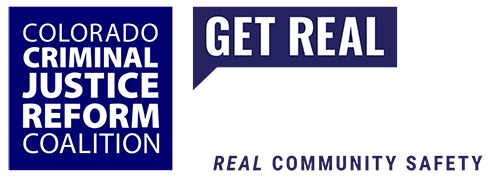
THE SOLUTION
What Works to Build Real Community Safety
Denver dramatically underfunds the types of programs that are highly effective at improving community safety – community-led prevention, interruption, healing, and recidivism reduction. The data backs it. Denver voters want it. And the outcomes speak for themselves.
1
Prevention: Stopping Harm Before it Happens
Real safety starts long before a 911 call. It starts with connection, stability, and opportunity.
Research confirms that social supports, particularly for young people, reduce involvement in the legal system, improve school outcomes, and build resilience.
Organizations like Fully Liberated Youth, Street Fraternity, and the Crowley Foundation are among the many effective community-based groups serving Denver’s youth and young adults.
2
Intervention: Responding Before Harm Escalates
Real safety means meeting people where they are, and interrupting violence before it spreads.
Even when harm occurs, public safety depends on the community’s ability to respond quickly – to de-escalate conflict, prevent retaliatory violence, and provide support to those impacted.
Latino Coalition for Community Leadership, Life-Line Colorado, Struggle of Love Foundation, and Homies Unidos are partnering on a Community Violence Interruption initiative that has reduced violence – particularly gun violence – among metro Denver youth and young adults. This proven effort recently lost $2.7 million in federal funding due to cuts under the Trump administration.
3
Healing: Supporting Victims and Repairing Harm
Real safety means accountability and healing, not just punishment. Victims deserve more than a conviction, they deserve restoration.
Whether or not victims of crime choose to report to police, they deserve support, access to trauma recovery services, and victim compensation. Real safety also means ensuring crime survivors have the option, if they choose, to engage in restorative justice as part of their healing journey.
Para Ti Mujer, and the Therapists of Color Collaborative provide culturally competent, trauma-informed care designed to meet the needs of historically underserved victims, including men, young adults, and people of color. Circles of Change is a leader in offering culturally rooted restorative justice for youth, families, and communities.
4
Reducing Recidivism: Stopping Harm from Happening Again
Real safety means giving people a second chance, not setting them up to fail.
The people most likely to commit crime are people that have committed crime in the past. But that cycle is not inevitable. Reducing recidivism through reentry programs, and providing second chances with access to good jobs, affordable housing, and behavioral health care, is a critical part of building real safety.
Life-Line Colorado, Servicios de la Raza, Charities House Ministries, and the Empowerment Program provide effective reentry support for men and women returning from prison to Denver. The Second Chance Center offers similar services for people released from Denver jails.
Colorado has already embraced the community-led grant model
The state of Colorado funds 3 highly successful community-led grant programs.
WAGEES (Work and Gain Education & Employment Skills) Grant Program funds reentry support through 22 community and faith-based organizations statewide, coordinated by a trusted intermediary. It has been praised as a national model for its impact and community-led design.
The Crime Prevention Grant Program funds community development and crime prevention efforts in N Aurora, SE Colorado Springs, Trinidad and Grand Junction.
The Crime Survivor Grant Program expands access to victim services, particularly for historically underserved victims, including young adults, men, and people of color.
Colorado has recognized that these essential public safety services require adequate public funding, not just private philanthropy. Denver must now follow suit.

Let’s Get Real
Denver needs sustained investment in the trusted relationships, cultural understanding, and on-the-ground experience that only community can bring.
Let’s get real about safety. Let’s build it together.


